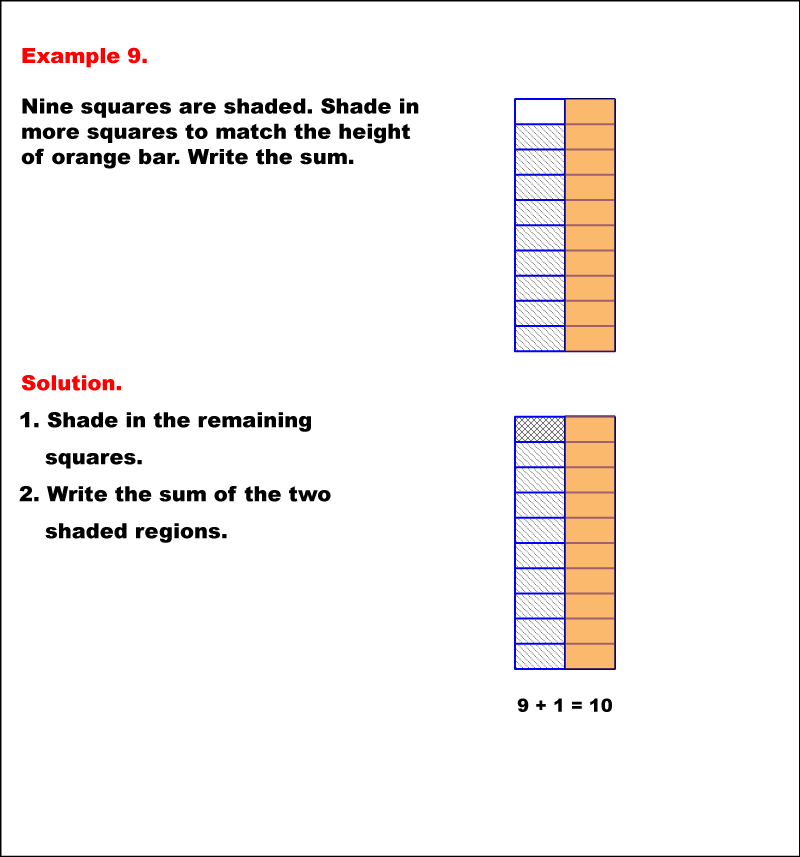
Display Title
Math Example--Arithmetic--Getting to 10--Example 9
Display Title
Math Example--Arithmetic--Getting to 10--Example 9

Topic
Arithmetic
Description
Nine squares are shaded. Shade in more squares to match the height of the orange bar. Write the sum. Shade in the remaining 1 square. The sum of the shaded regions is 9 + 1 = 10. The answer is 10.
The topic of Arithmetic involves understanding how numbers combine to reach specific sums. In this case, the examples focus on finding different ways to add numbers to reach 10, which is a fundamental concept in arithmetic. These examples help students build a strong foundation in addition and number relationships.
Seeing multiple worked-out examples allows students to identify patterns, reinforce concepts, and gain confidence. Through repetition and variation, students can better grasp the underlying principles and strategies for solving problems.
Teacher’s Script: Let's look at this example. Here, nine squares are shaded. shade in more squares to match the height of the orange bar. write the sum. This shows us that by adding the shaded and unshaded squares, we can find the total number 10. Try shading in the squares yourself to verify the result!
For a complete collection of math examples related to Arithmetic click on this link: Math Examples: Getting to 10 Collection.
| Common Core Standards | CCSS.MATH.CONTENT.K.OA.A.4 |
|---|---|
| Grade Range | K - 2 |
| Curriculum Nodes |
Arithmetic • Numbers and Patterns • Counting |
| Copyright Year | 2020 |
| Keywords | counting, making tens |